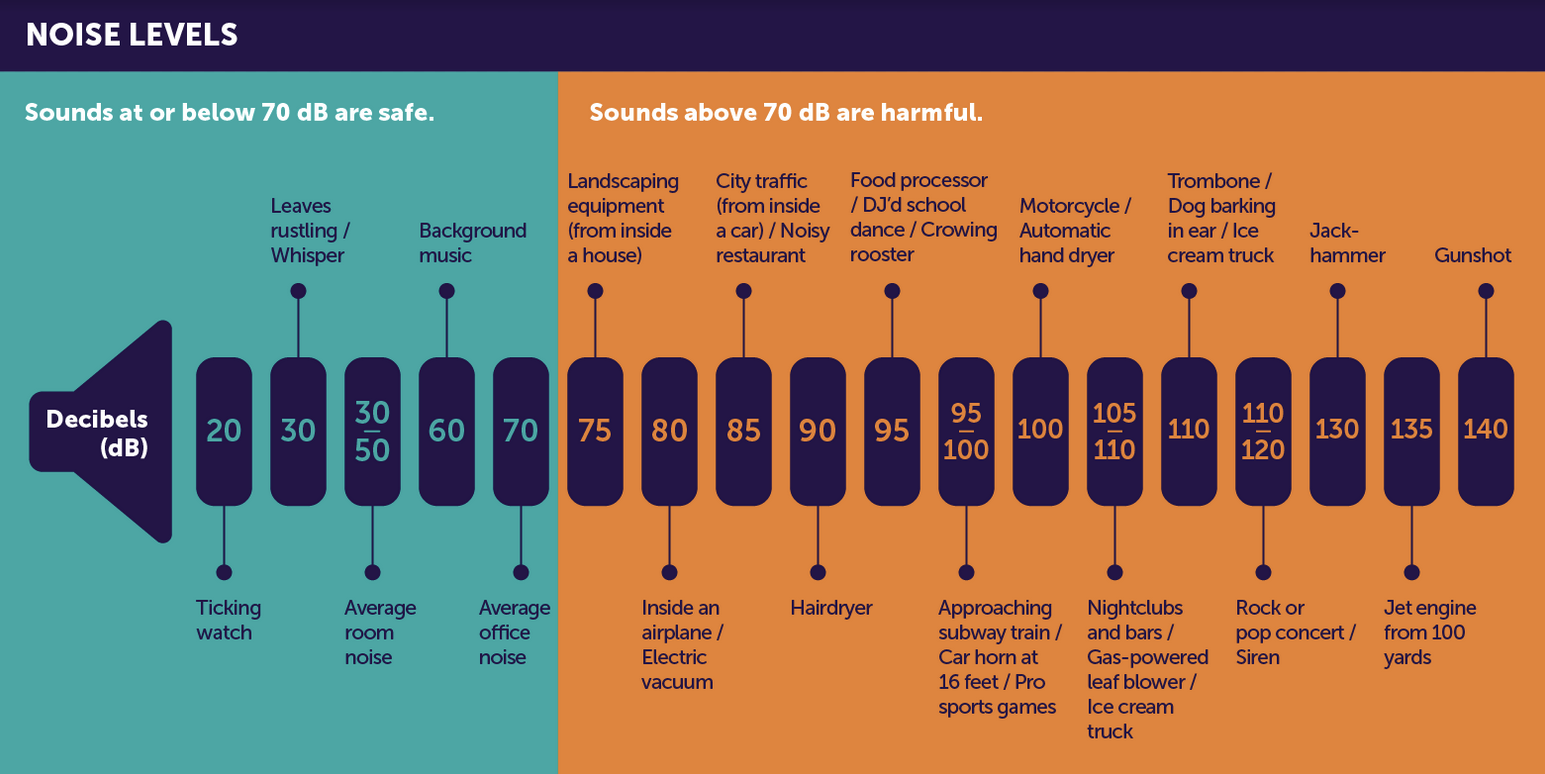Ver pagina en: English | Español
If It Sounds Too Loud, It Is Too Loud
Decibels are the unit of measurement for sound, abbreviated dB. Sounds at or below 70 dB are considered safe for our hearing. That’s the sound of a normal conversation between two people.
Sounds above 70 dB will damage hearing over time.
Like the Richter scale for measuring earthquakes, the decibel scale is logarithmic. This means that loudness is not directly proportional to sound intensity. Instead, the intensity of a sound grows very fast. A sound at 20 dB is 10 times more intense than a sound at 10 dB, and would be perceived as twice as loud.
Get Updates in Your Inbox
If we need to shout at a friend who is an arm’s length away, or we can hear music coming out of another person’s headphones, the volume is at least 85 dB, which is the maximum “safe level” for workplace noise exposure over the course of an eight-hour day.
The issue is that it’s not just the workplace that we experience loud sounds—it’s also during our commute or while out to dinner or the movies—as well as our use of personal listening devices.
This workplace limit is also not safe for children, whose auditory system is still developing, and their ears have to last a lifetime. We recommend following the Centers for Disease Control and Prevention guidelines averaging no more than 70 dB.
Headphones and earbuds can reach as loud as 100 dB or more, so a safe level is 50 to 60 percent of the maximum volume. This helps protect our hearing and allows us to listen to our favorite music for longer. When using Bluetooth-enabled earbuds, limit the volume using the phone’s settings.
For venues and events where amplified music is being played, the World Health Organization issued recommendations to monitor the sound levels, optimize acoustics to ensure safe listening, and provide ear protection as well as access to quiet zones so attendees can rest their ears.
The National Institute on Deafness and Other Communication Disorders has an interactive infographic on decibel levels.
Measure Decibels Using Your Phone
Both Apple and Android phones support sound level meter apps that measure decibels. In fact, on the Apple iPhone and Apple Watch, the embedded Health app measures decibels and can send alerts when it is too loud. Here are other sound level meter apps:
NoiSee (iOS)
SLPnFFT Noise Meter (iOS)
Sound Meter X (iOS)
Sound Meter (Android)
SoundPrint (iOS and Android)
While these guidelines and comparison are helpful, a basic rule of thumb is common sense: If it sounds too loud, it is too loud.
Just as we are aware of how much sun we get or steps we’ve walked, let’s be aware of our daily sound dose. A ballpark understanding of how much volume our ears are exposed to can help us take steps to protect them, by carrying and wearing earplugs, turning it down when we can, and taking quiet breaks to rest our ears.
30-35dB
Sleep disruption, especially if noise is not continuous.
45dB
Disturbance of concentration and interference with learning.
55dB
Non-auditory negative health effects.
60dB
Interference with speech comprehension for those with hearing loss.
70-75dB
Interference with speech comprehension for those with typical hearing.


